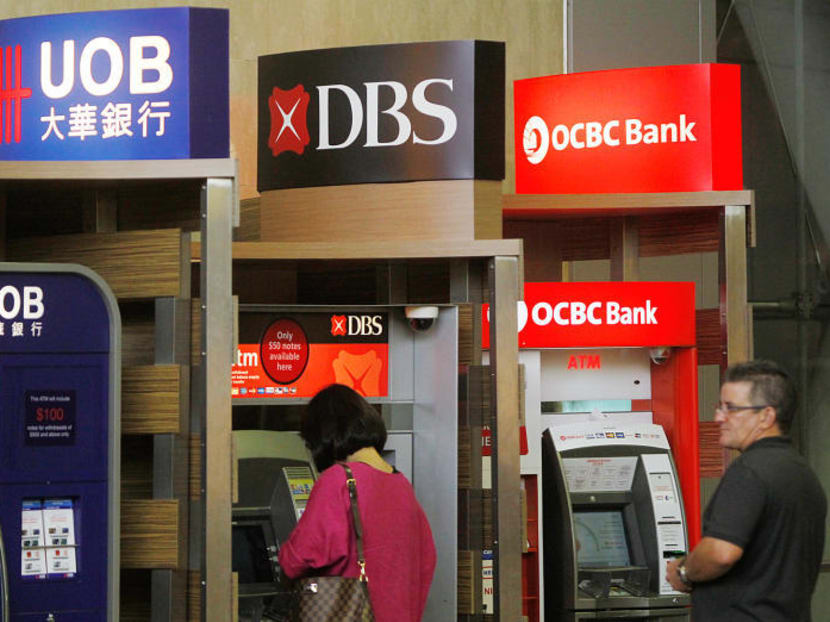Banks that pay for your ‘loyalty’ may help you earn more on savings
If you are getting the standard interest rate of about 0.05 per cent on your savings or current account, you may be missing out. Banks want your loyalty and are willing to pay for it.
If you are getting the standard interest rate of about 0.05 per cent on your savings or current account, you may be missing out.
Banks want your loyalty and are willing to pay for it.
You will need to consider the options carefully, though, since they are complex.
What banks are trying to do is to shift consumers from using accounts at multiple banks to consolidating their finances at a single bank. They pay for that loyalty.
Standard Chartered Bank kicked off the push towards loyalty way back in 2012, when it launched its Bonus Saver current account with higher interest rates.
The programme was fairly simple then, offering an interest rate of 1.88 per cent a year on the first S$25,000 in the account for anyone who spent S$500 a month on a debit or credit card.
Other banks soon followed and developed their own programmes, offering higher interest rates for customers who used more of their services.
As time went on, however, the combinations of accounts and products and spending required to get the higher rate have become far more complex.
A few examples show what you’ll need to consider as you look for higher interest rates.
Read also
WHAT SOME BANKS OFFER
One of the easier programmes to understand now is the UOB One account. It offers up to 3.88 per cent a year in interest when you spend S$500 monthly on your credit card and credit your salary of at least S$2,000 or pay three bills every month via the interbank Giro arrangement.
You’ll make 1.85 per cent on the first S$15,000, then between 2 and 3.88 per cent on each incremental S$15,000 up to S$75,000.
Once your balance reaches S$75,000, however, the interest rate on higher balances drops back to 0.05 per cent.
Another that is fairly simple is Maybank Save Up, which offers up to 3 per cent interest a year if you open a savings account and use three out of nine products.
Spend S$500 a month on your card, have at least S$300 in Giro payments and get a unit trust or loan at Maybank, for example, and you can get a higher rate.
DBS raised the ante this month when it increased the interest rate on its Multiplier account to as high as 3.8 per cent.
You can earn up to 2.08 per cent a year on the first S$50,000 in your account if you have your salary credited and transactions in one category, and 3.8 per cent on the next S$50,000 if you have your salary credited and transaction in three categories, such as credit card, insurance and mortgage payments. Interest rates revert to lower levels for deposits above S$100,000.
And if you have bigger balances, OCBC stands out.
If you spend at least S$500 a month on your credit card and have your salary deposited and get an insurance or investment product, you can earn up to 3.45 per cent.
Whereas the rate at most other banks drops back to 0.05 per cent or so once your deposits hit S$100,000, OCBC gives you a bonus for a limited time on higher incremental balances.
Read also
CHOOSING THE RIGHT OFFER
These and other accounts can indeed earn you lots more. The process of choosing the best savings account can be confusing, though, since every person has their own spending habits and salary levels.
Moreover, each bank has requirements, tiers and conditions that can be quite complex.
To figure out which one will work best for you, spend a little bit of time calculating your likely account balances, credit card and bill payments, insurance payments and investments.
It is better to look at your finances for six months or a year, since requirements at most banks will need you to have consistent balances, spending or payments.
Then, you can use a calculator to help decide which account fits you best.
Online financial advisory platform Seedly has created a calculator, now in a test version, that helps calculate how much you can earn.
Once you input your salary, account balance, credit card spending, payments and a few other details, Seedly estimates the amount you will earn at each of about seven banks.
Testing it with a balance of S$5,000 and other fairly standard financial arrangements showed that a consumer could earn between S$50 and S$153 a year, far higher than the S$2.50 that a rate of 0.05 per cent would yield, and more than S$1,500 with S$50,000 in the account.
DBS, OCBC and other banks have their own calculators for their products as well.
If you already have an account at the bank that looks like it will give you the best deal, you may need to change the type of account that you have or shift how you pay your bills.
If another bank looks better, you will need to shift your balances and much of your spending to that other bank.
Calculating all the permutations to decide on an account and then jumping through all the hoops to get the higher interest rate isn’t necessarily easy, especially when you first set up your account.
Once you set it up and get into a routine, though, having an extra S$100 or S$1,000 or more extra can be a real benefit.







